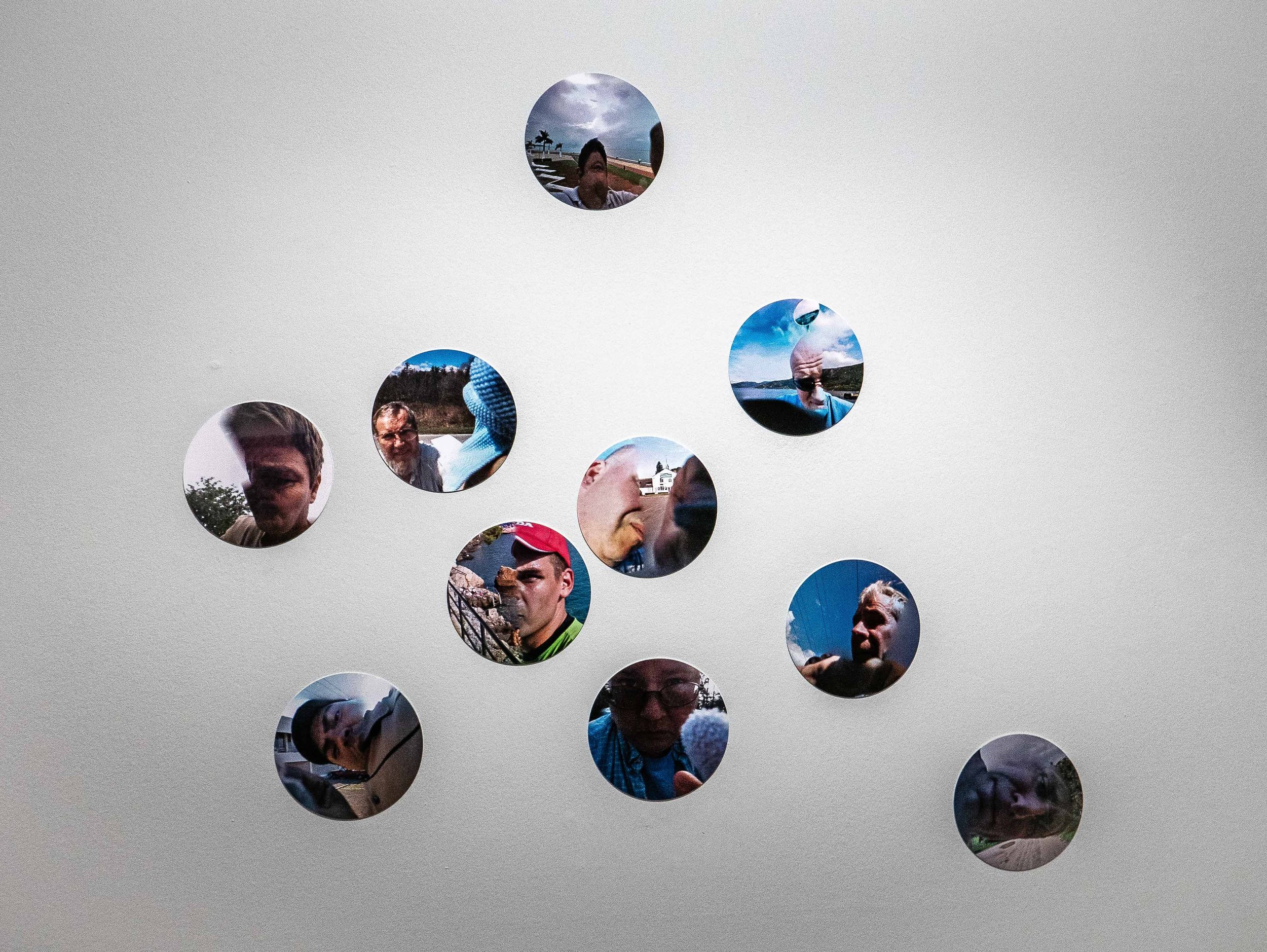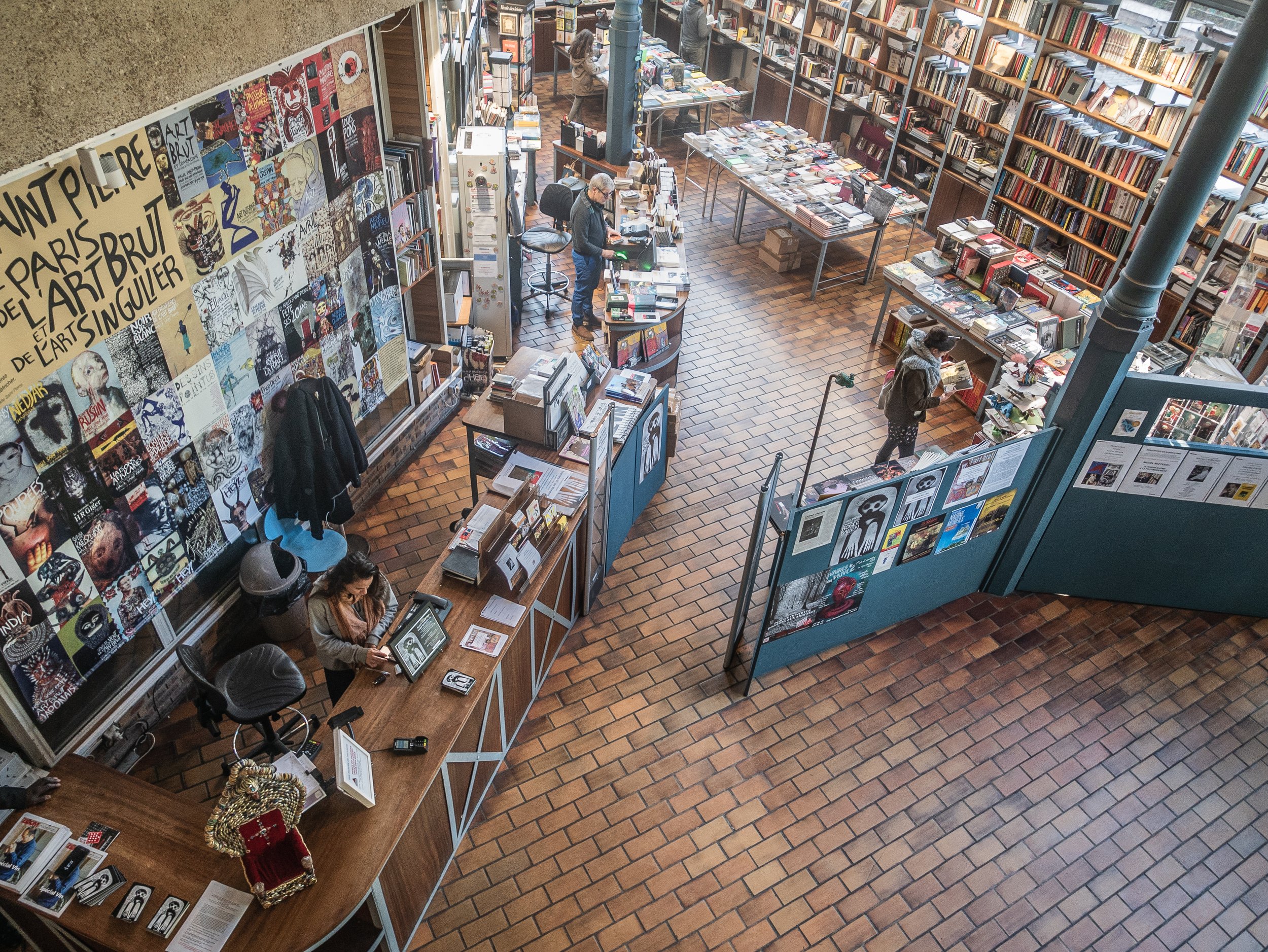 "The World of Roger Ballen" is an exhibition of the work of one of the most innovative contemporary photographers, showing currently and until July 2020 at the Halle St Pierre in Montmartre, Paris. The gallery itself is a light airy space on two levels, the upper galleries being accessed from a balcony overlooking the ground floor cafe and bookshop. It specialises in showing 'Art Brut' or outsider art, makes it particularly appropriate for this work. The current exhibition uses the upper floor for a fairly standard formal presentation of a generous selection Ballen's photographs as large framed prints, with some of his drawings directly on the walls and some of the props used in his work. Downstairs, the gallery contains recreations of several of the spaces he has photographed in the form of a series of vignettes, again using the photographer's own props, models, artworks and even a life sized model of himself with his Rolleiflex on a rotating pedestal. There was also a separate projection room showing a sequence of short films of the places and people he has worked with.
"The World of Roger Ballen" is an exhibition of the work of one of the most innovative contemporary photographers, showing currently and until July 2020 at the Halle St Pierre in Montmartre, Paris. The gallery itself is a light airy space on two levels, the upper galleries being accessed from a balcony overlooking the ground floor cafe and bookshop. It specialises in showing 'Art Brut' or outsider art, makes it particularly appropriate for this work. The current exhibition uses the upper floor for a fairly standard formal presentation of a generous selection Ballen's photographs as large framed prints, with some of his drawings directly on the walls and some of the props used in his work. Downstairs, the gallery contains recreations of several of the spaces he has photographed in the form of a series of vignettes, again using the photographer's own props, models, artworks and even a life sized model of himself with his Rolleiflex on a rotating pedestal. There was also a separate projection room showing a sequence of short films of the places and people he has worked with.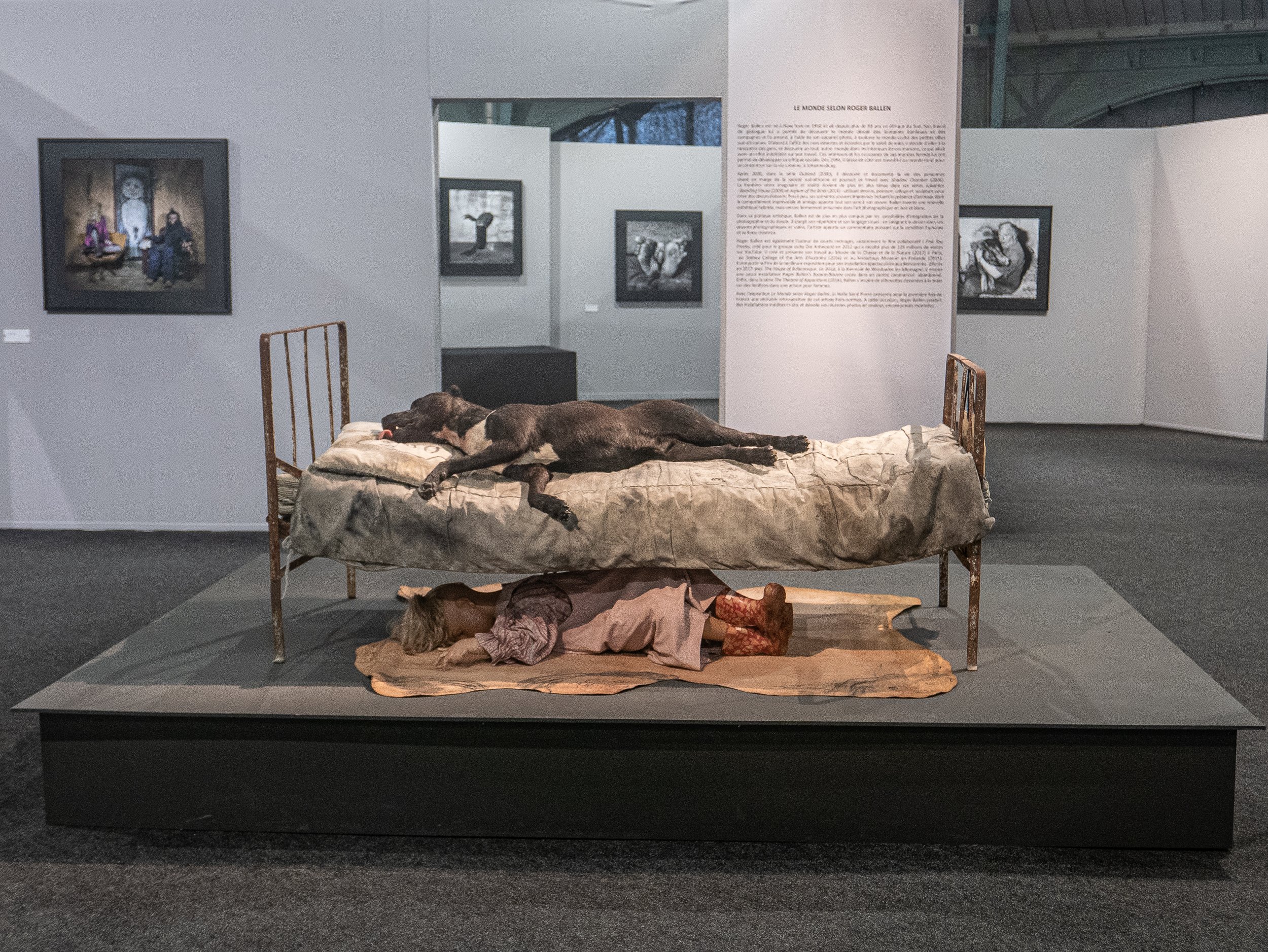
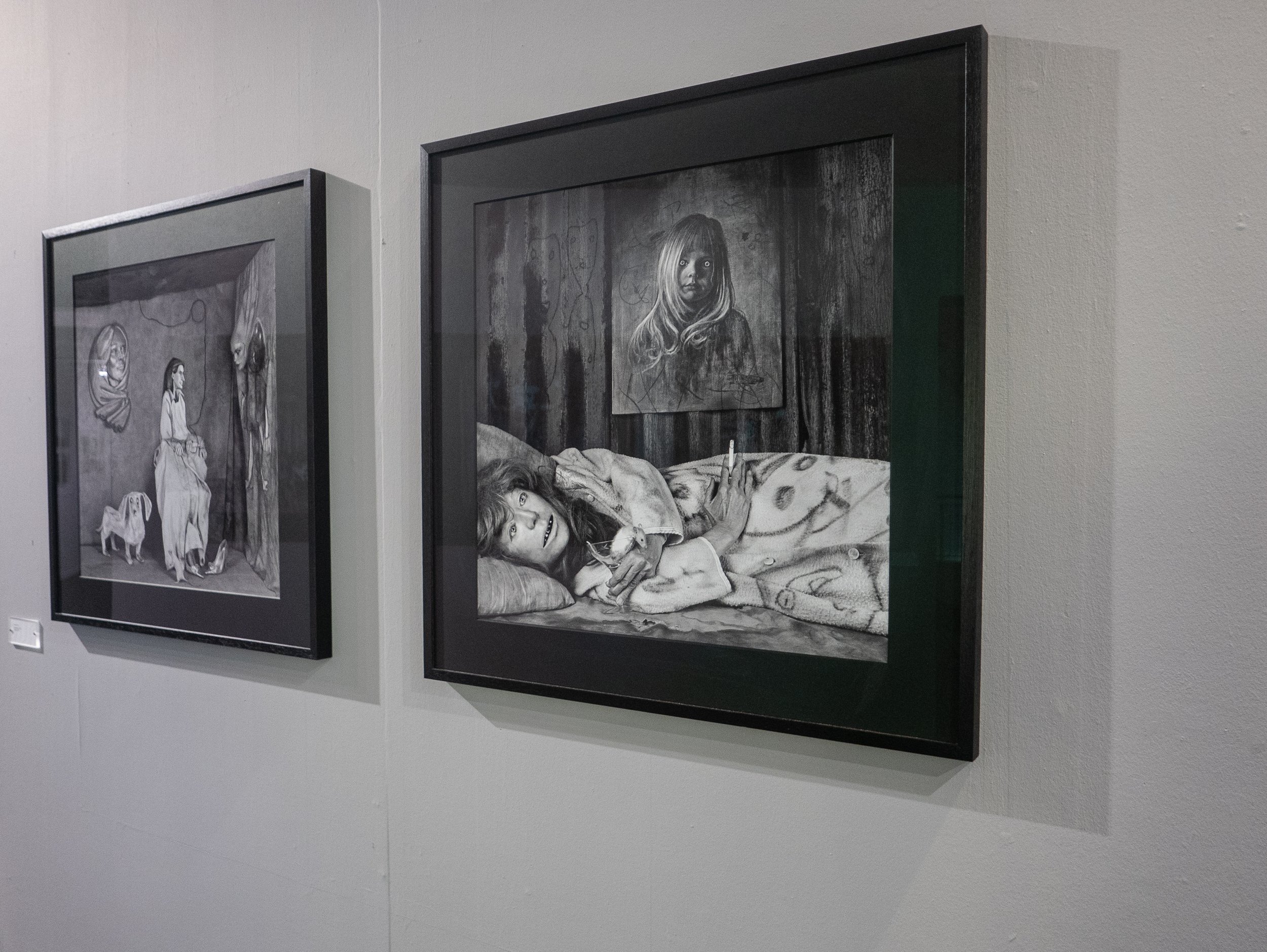
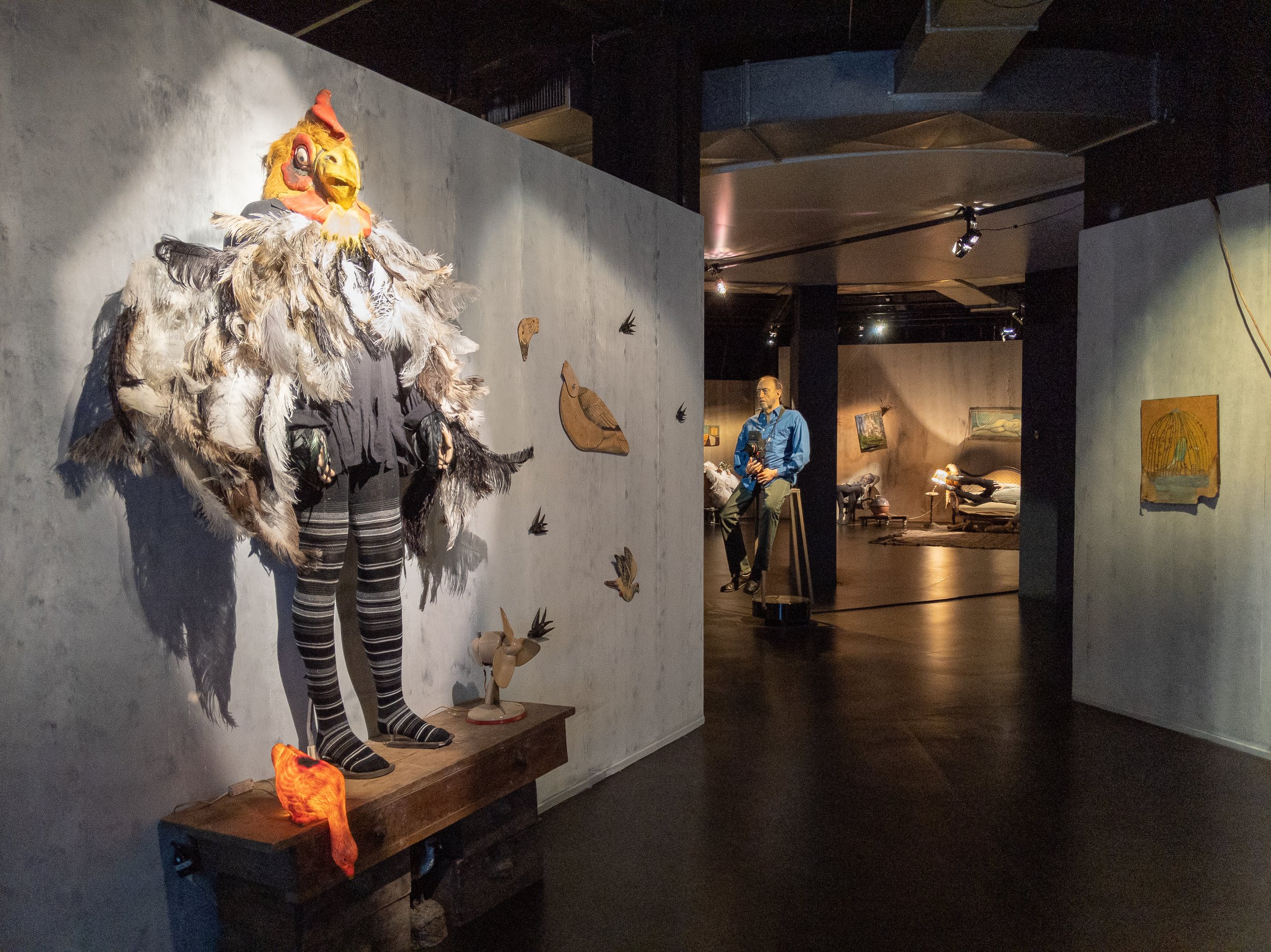
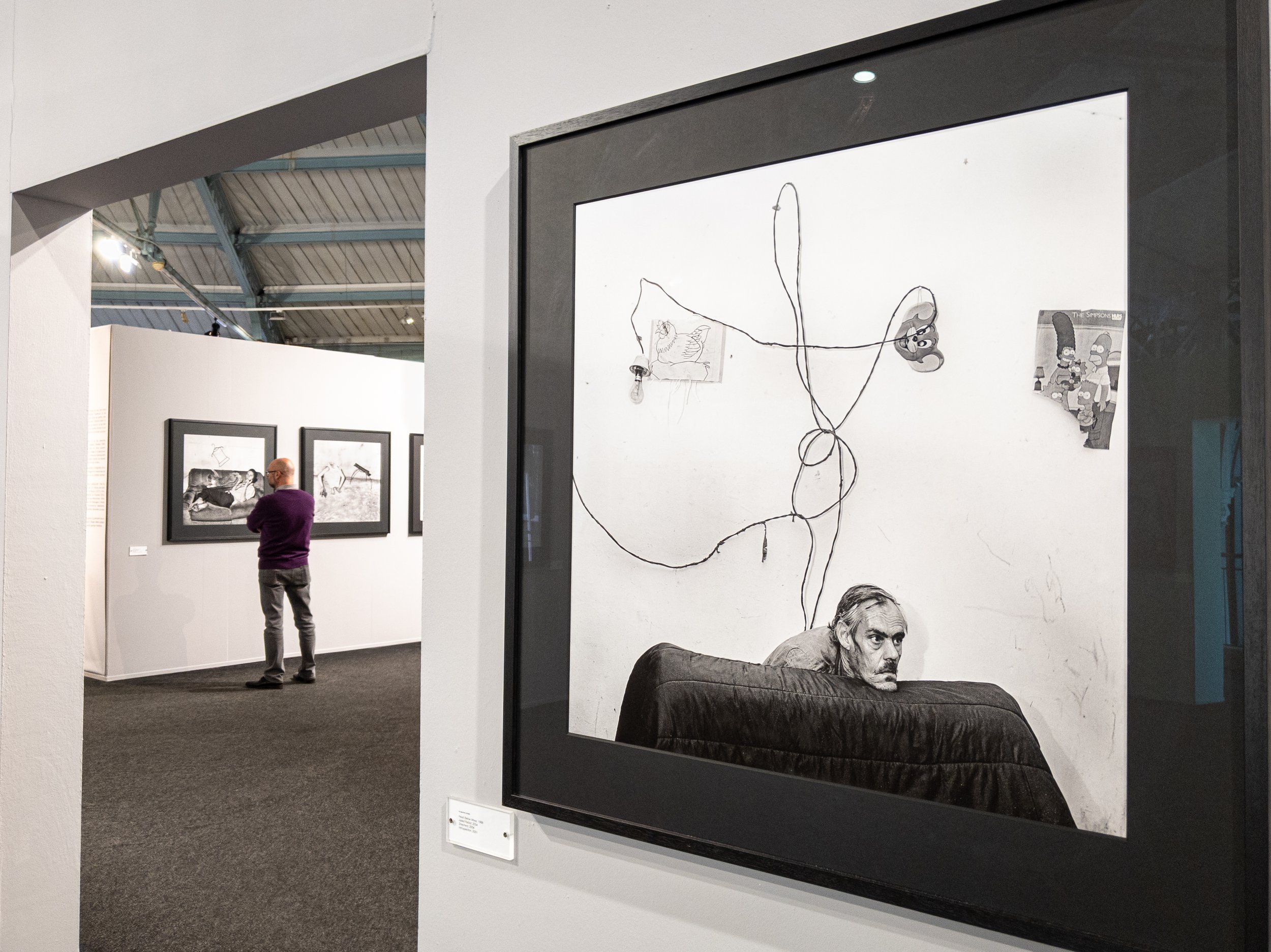
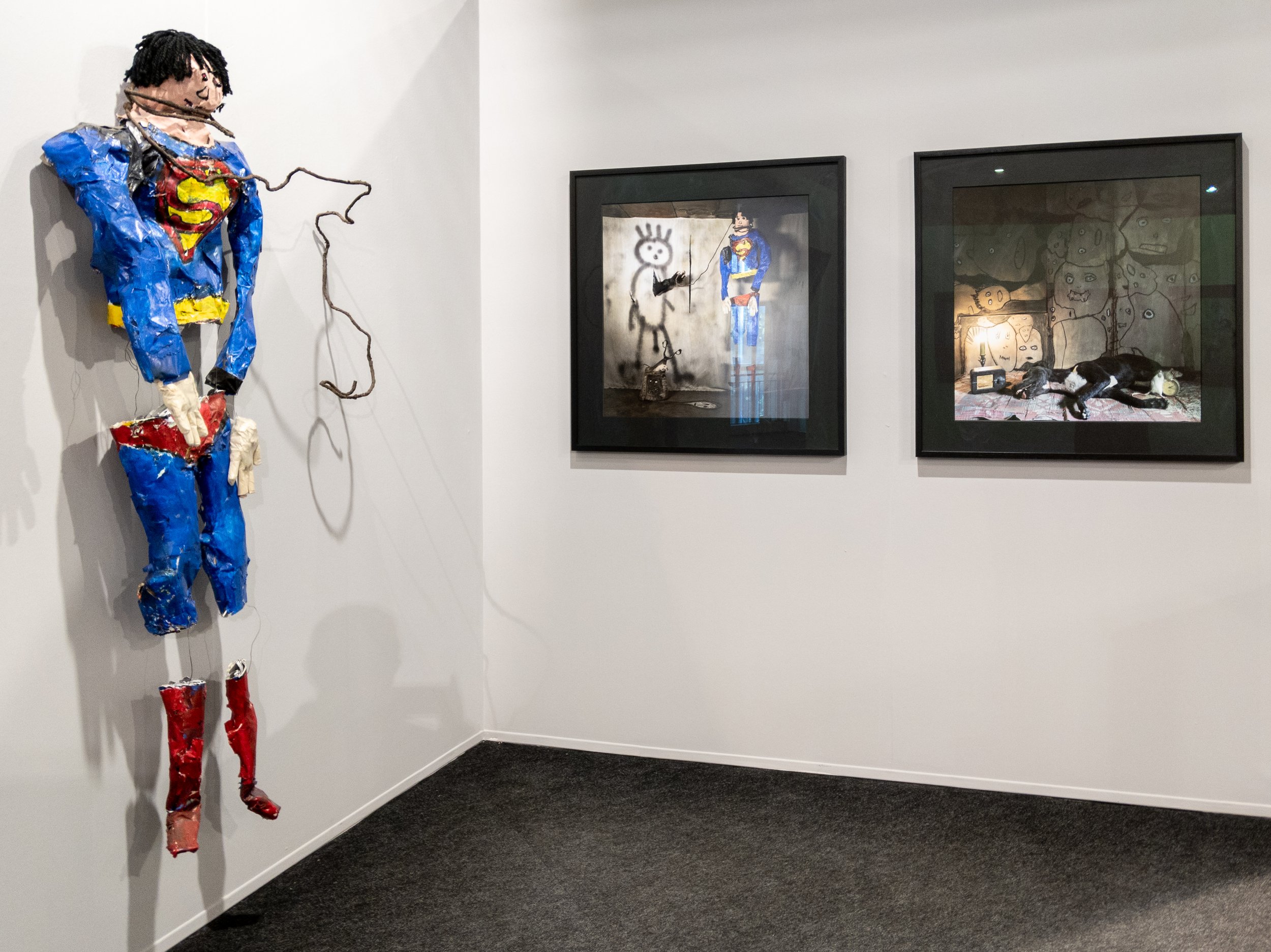
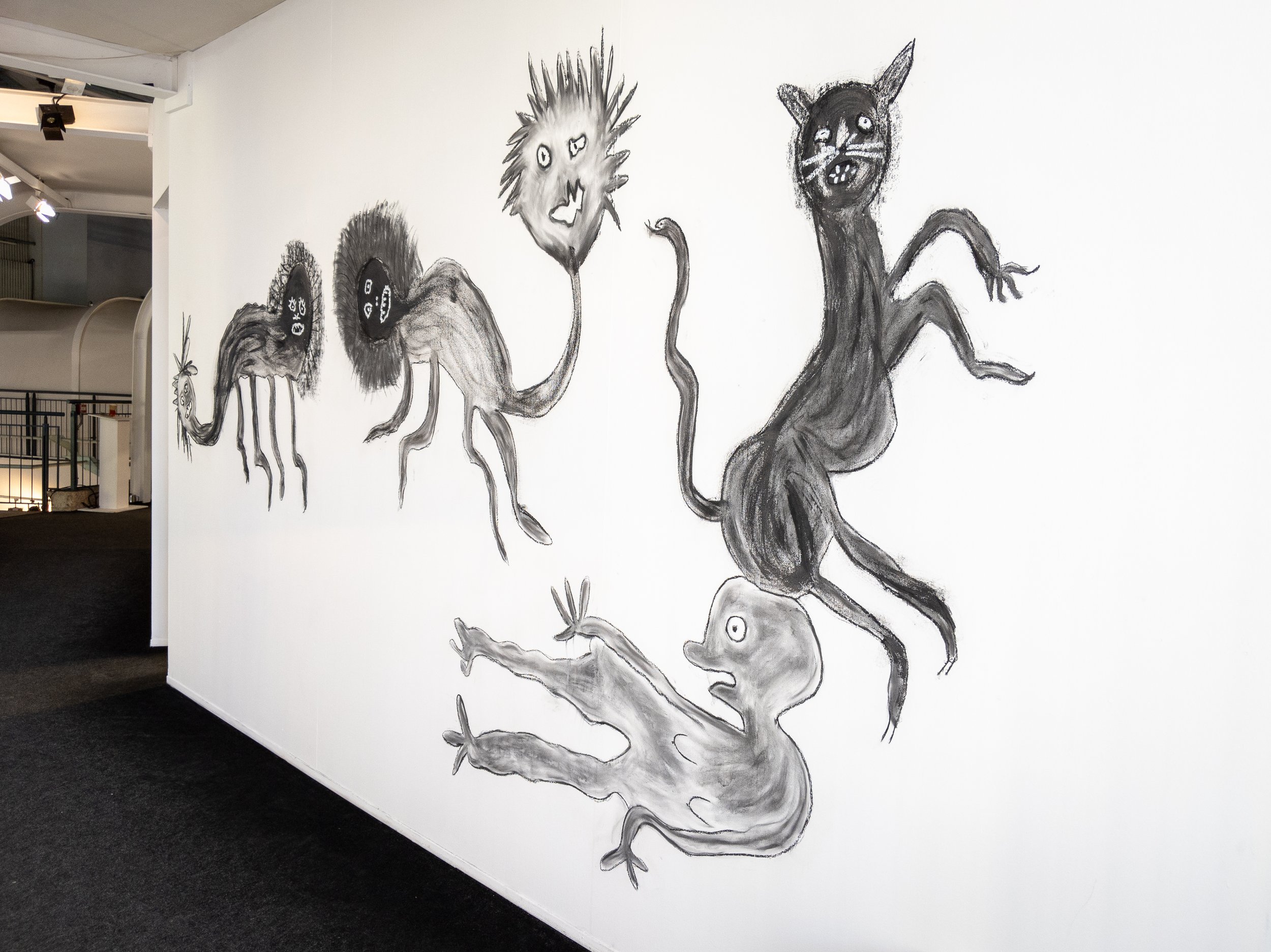
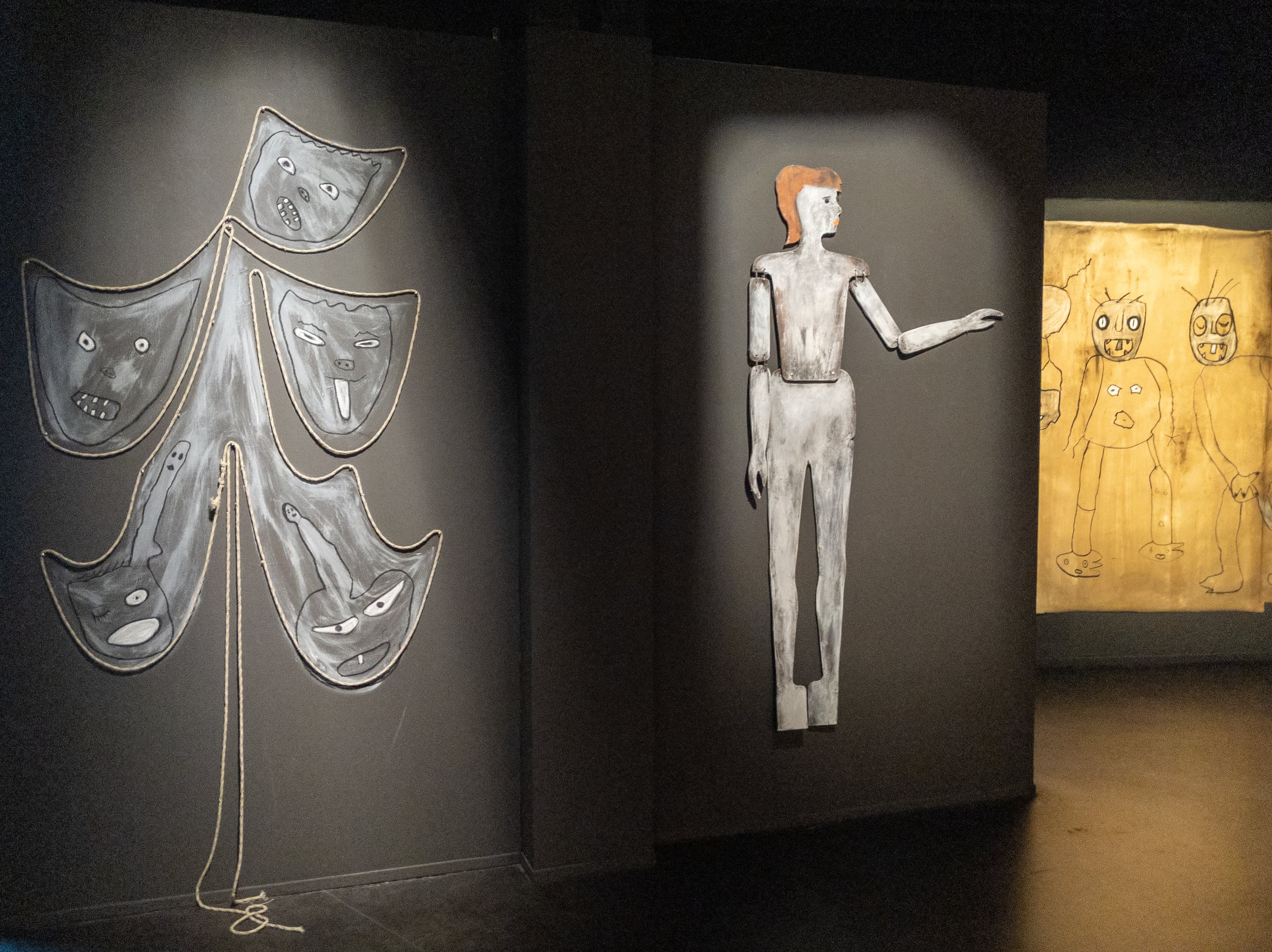


 As can be seen above, the places and people he has photographed would perhaps best be described as being on the very fringes of society and the images are imaginative, darkly humorous, intriguing and sometimes challenging. The films shown at the gallery are also available on his website and perhaps give a better feel for the atmosphere in which his work is created. Ballen has recently been interviewed for the October edition of the British Journal of Photography by Michael Grieve and an interview with him at Paris Photo is also available on their websitewww.rogerballen.comhttps://www.hallesaintpierre.org/wp-content/uploads/2012/01/DP-HSP_Roger-Ballen.pdfGrieve M. 'The World according to Roger Ballen', British Journal of Photography, Issue No.7888, pp 38-49, October 2019.
As can be seen above, the places and people he has photographed would perhaps best be described as being on the very fringes of society and the images are imaginative, darkly humorous, intriguing and sometimes challenging. The films shown at the gallery are also available on his website and perhaps give a better feel for the atmosphere in which his work is created. Ballen has recently been interviewed for the October edition of the British Journal of Photography by Michael Grieve and an interview with him at Paris Photo is also available on their websitewww.rogerballen.comhttps://www.hallesaintpierre.org/wp-content/uploads/2012/01/DP-HSP_Roger-Ballen.pdfGrieve M. 'The World according to Roger Ballen', British Journal of Photography, Issue No.7888, pp 38-49, October 2019.
Don McCullin at Tate Britain
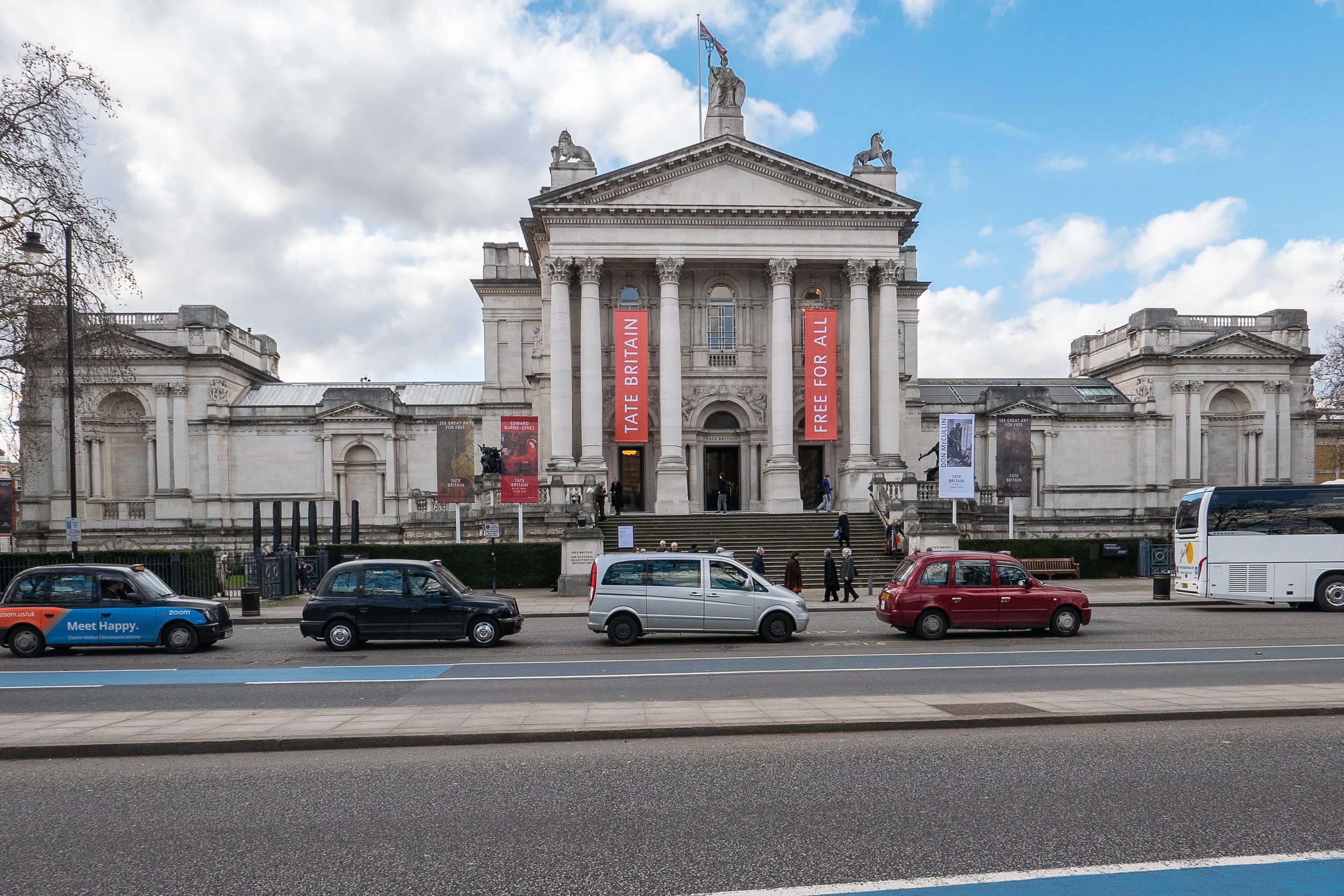 The other 'blockbuster' exhibition of photography currently showing in London, is a very substantial retrospective at Tate Britain of the work of Don McCullin, the first photographer to have been given this accolade. Built in 1892 (as the National Gallery of British Art), in contrast to the brutalist concrete of the South Bank, this is a more refined traditional Victorian art gallery with a classical portico entrance and a central dome. The layout of the exhibition also followed relatively traditional lines; exhibition quality monochrome silver gelatin prints (all printed by McCullin in his own darkroom), window mounted in plain black frames, evenly spaced as single images or in small groups and centered at eye level around the walls of eight substantial rooms. The photographs were presented in roughly chronological order, grouped geographically starting with his earliest images of gang members in east London in the late 1950's and moving on to images of conflict zones and famines in Berlin, Cyprus, the Middle East, Vietnam and Cambodia, Sudan, Biafra as well as those showing the effects of de-industrialisation, social deprivation, poverty and homelessness in London and Northern England. The captions were mostly simple place names but two or three images in each room had more detailed explanations, describing McCullin's own insights about the situations he found himself in.I already knew his work well from several of his books and having written an essay about his photography in Year 1 of the FdA course. There were no particular surprises on offer but the volume, range and power of the photographs was as impressive as anticipated, to the point of becoming almost overwhelming. These subject matter of these images is dark, moving, poignant, even shocking but the manifest empathy of the photographer for the individuals affected, the victims of these tragedies and his desire to ensure that their stories are told, totally dispels any notion of sensationalisation or exploitation. This impression is confirmed by Colin Jacobsen in his article about the exhibition in the British Journal of Photography, who also quotes Harold Evans, McCullin's former editor at The Sunday Times "He cared about the victims, the collateral damage" and "He couldn't express it in words, but he expressed it in his photography".Although the gallery was busy, the experience of being able to examine close up, the quality in the detail of these prints, from negatives exposed in often unimaginably challenging circumstances, made the journey worthwhile. This was particularly true of a group of his later photographs presented in the final room of the exhibition, some landscape images made near his home on the Somerset Levels.
The other 'blockbuster' exhibition of photography currently showing in London, is a very substantial retrospective at Tate Britain of the work of Don McCullin, the first photographer to have been given this accolade. Built in 1892 (as the National Gallery of British Art), in contrast to the brutalist concrete of the South Bank, this is a more refined traditional Victorian art gallery with a classical portico entrance and a central dome. The layout of the exhibition also followed relatively traditional lines; exhibition quality monochrome silver gelatin prints (all printed by McCullin in his own darkroom), window mounted in plain black frames, evenly spaced as single images or in small groups and centered at eye level around the walls of eight substantial rooms. The photographs were presented in roughly chronological order, grouped geographically starting with his earliest images of gang members in east London in the late 1950's and moving on to images of conflict zones and famines in Berlin, Cyprus, the Middle East, Vietnam and Cambodia, Sudan, Biafra as well as those showing the effects of de-industrialisation, social deprivation, poverty and homelessness in London and Northern England. The captions were mostly simple place names but two or three images in each room had more detailed explanations, describing McCullin's own insights about the situations he found himself in.I already knew his work well from several of his books and having written an essay about his photography in Year 1 of the FdA course. There were no particular surprises on offer but the volume, range and power of the photographs was as impressive as anticipated, to the point of becoming almost overwhelming. These subject matter of these images is dark, moving, poignant, even shocking but the manifest empathy of the photographer for the individuals affected, the victims of these tragedies and his desire to ensure that their stories are told, totally dispels any notion of sensationalisation or exploitation. This impression is confirmed by Colin Jacobsen in his article about the exhibition in the British Journal of Photography, who also quotes Harold Evans, McCullin's former editor at The Sunday Times "He cared about the victims, the collateral damage" and "He couldn't express it in words, but he expressed it in his photography".Although the gallery was busy, the experience of being able to examine close up, the quality in the detail of these prints, from negatives exposed in often unimaginably challenging circumstances, made the journey worthwhile. This was particularly true of a group of his later photographs presented in the final room of the exhibition, some landscape images made near his home on the Somerset Levels.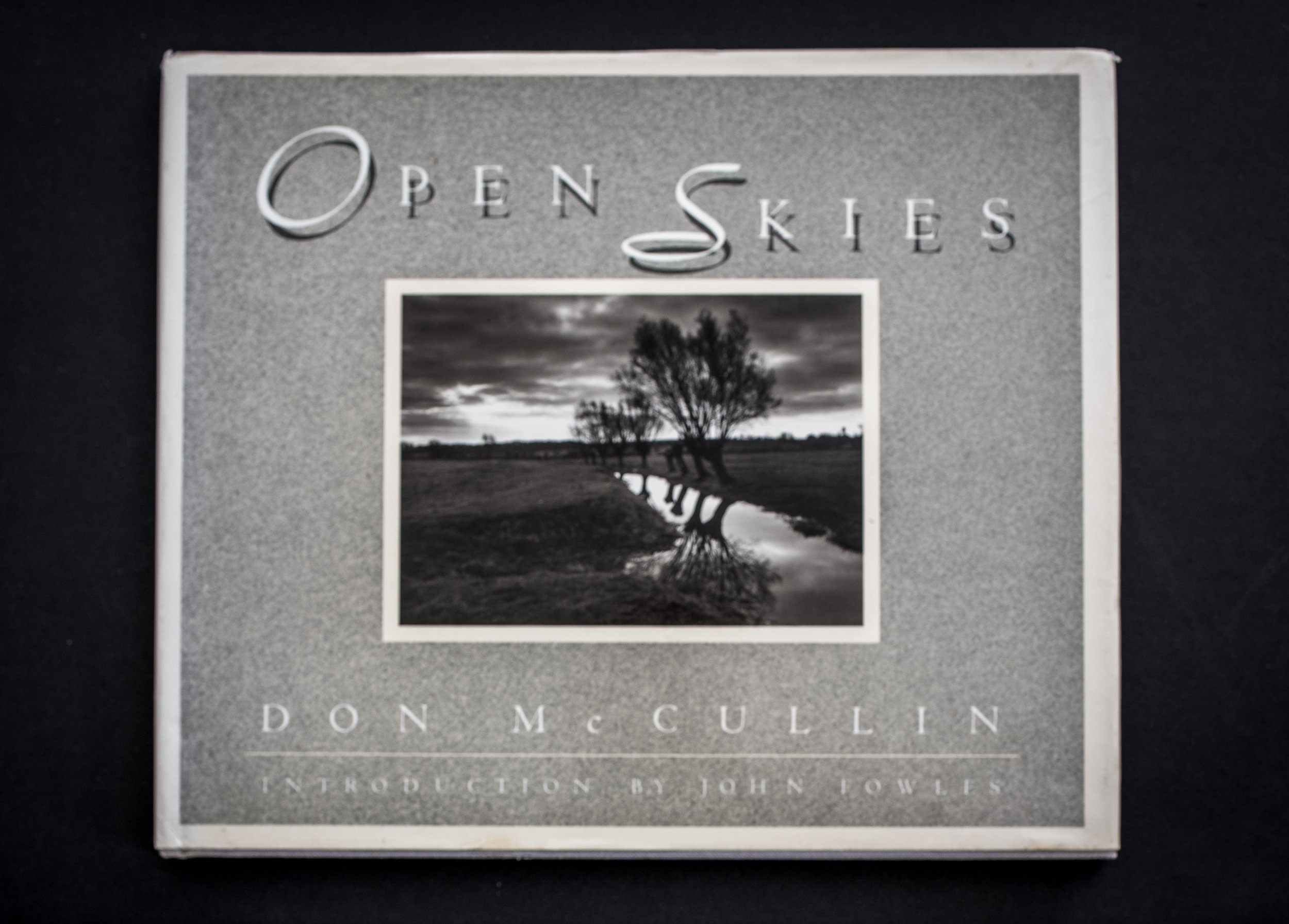 I have a second hand copy from America of his book 'Open Skies' published in 1989, which includes these photographs and have previously felt that they were so dark that they had been over-printed, blocking up the details in the shadow areas. Having now seen these photographs 'in the flesh', the detail in the shadows has been retained, the quality is superb and I can appreciate that the problem in the book is down to the reproduction of the images, emphasising the value in being able to get to see the original prints. In his introduction to the book, John Fowles speculates that the darkness of these images is a reflection of McCullin's 'state of mind' following his years of covering human tragedies all around the world, along with the tragedies of his own personal life.Thirty years further down the line and now aged 83, McCullin commented on this in a recent television documentary for BBC Four, confirming that as he has got older, he feels the need to make his prints darker, yet his mood now seems lighter and what was most apparent was his humility and that he still cares passionately about people, regardless of their background but especially the less fortunate among us.https://www.tate.org.uk/what's-on/tate-britain/exhibition/don-mccullinJacobsen, C., "Endframe, Don McCullin': British Journal of Photography, Issue 7882, p 98, April 2019.McCullin, D., 'Open Skies': Harmony Books, New York, 1989. (Originally published in Great Britain by Jonathon Cope).https://www.bbc.co.uk/iplayer/episode/m0002dv0/don-mccullin-looking-for-england, Accessed on 10/4/2019
I have a second hand copy from America of his book 'Open Skies' published in 1989, which includes these photographs and have previously felt that they were so dark that they had been over-printed, blocking up the details in the shadow areas. Having now seen these photographs 'in the flesh', the detail in the shadows has been retained, the quality is superb and I can appreciate that the problem in the book is down to the reproduction of the images, emphasising the value in being able to get to see the original prints. In his introduction to the book, John Fowles speculates that the darkness of these images is a reflection of McCullin's 'state of mind' following his years of covering human tragedies all around the world, along with the tragedies of his own personal life.Thirty years further down the line and now aged 83, McCullin commented on this in a recent television documentary for BBC Four, confirming that as he has got older, he feels the need to make his prints darker, yet his mood now seems lighter and what was most apparent was his humility and that he still cares passionately about people, regardless of their background but especially the less fortunate among us.https://www.tate.org.uk/what's-on/tate-britain/exhibition/don-mccullinJacobsen, C., "Endframe, Don McCullin': British Journal of Photography, Issue 7882, p 98, April 2019.McCullin, D., 'Open Skies': Harmony Books, New York, 1989. (Originally published in Great Britain by Jonathon Cope).https://www.bbc.co.uk/iplayer/episode/m0002dv0/don-mccullin-looking-for-england, Accessed on 10/4/2019
All I know is what's on the internet (2)
When down in London in February, I re-visited this exhibition in the Photographers Gallery just before it finished. I had spent relatively little time with the exhibits on my first visit (I had gone to the gallery primarily to see Roman Vishniac's photographs) and was anxious that I was perhaps missing the point of some of the work. The various contributors were all presenting images or artefacts from their ongoing research projects making it very relevant to this module but they were all concentrating on negative aspects of internet culture and I had struggled to find any positive messages. I felt that the issues highlighted were all important, the cynicism of the hardware manufacturers and social media platforms, the blatant deceptions perpetrated by individual and corporate users and even governments and the levels of exploitation of their workforce, potentially affecting any one of us.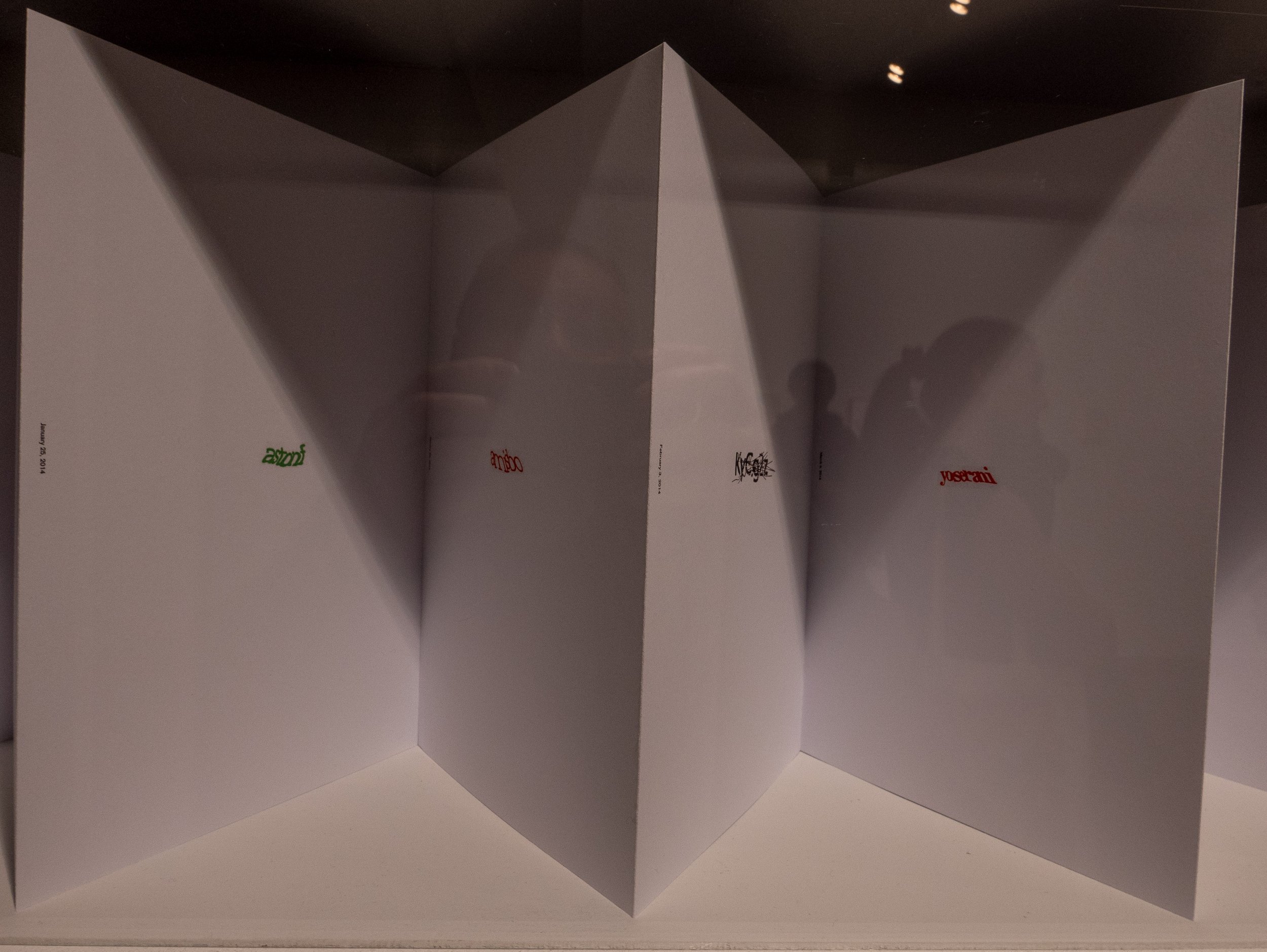
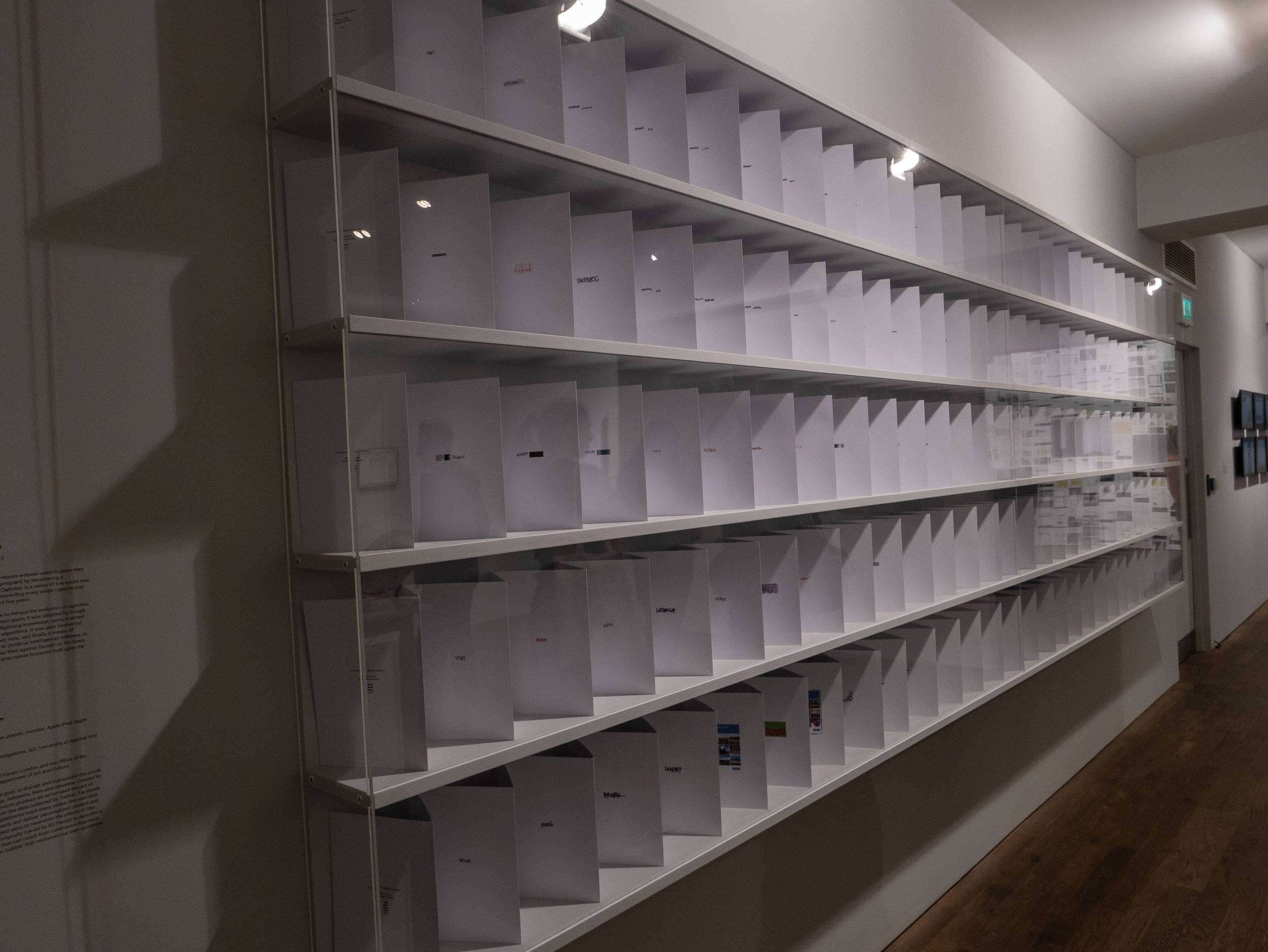 My second visit confirmed this impression and although there were several examples of novel ways of exhibiting work, and some interesting videos by groups experimenting with off grid lifestyles, there was nothing about the benefits of the digital imaging media which many currently enjoy. I initially felt that this was a missed opportunity to explore the democratisation of opportunities to use photography creatively, resulting from the ease of use and access to sophisticated technologies and sources of information but this would have needed a much larger platform and was clearly not the intention of the curators.
My second visit confirmed this impression and although there were several examples of novel ways of exhibiting work, and some interesting videos by groups experimenting with off grid lifestyles, there was nothing about the benefits of the digital imaging media which many currently enjoy. I initially felt that this was a missed opportunity to explore the democratisation of opportunities to use photography creatively, resulting from the ease of use and access to sophisticated technologies and sources of information but this would have needed a much larger platform and was clearly not the intention of the curators.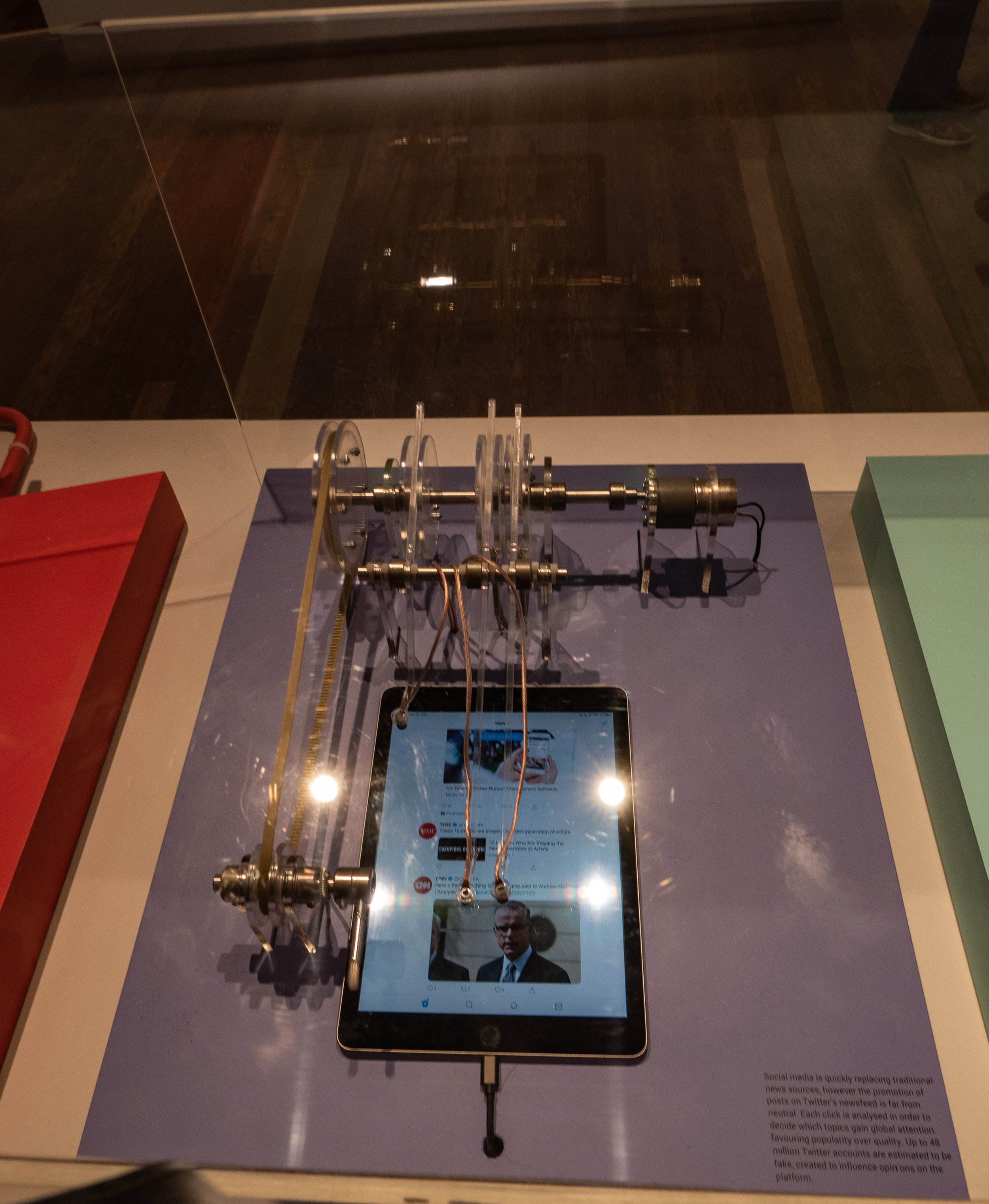
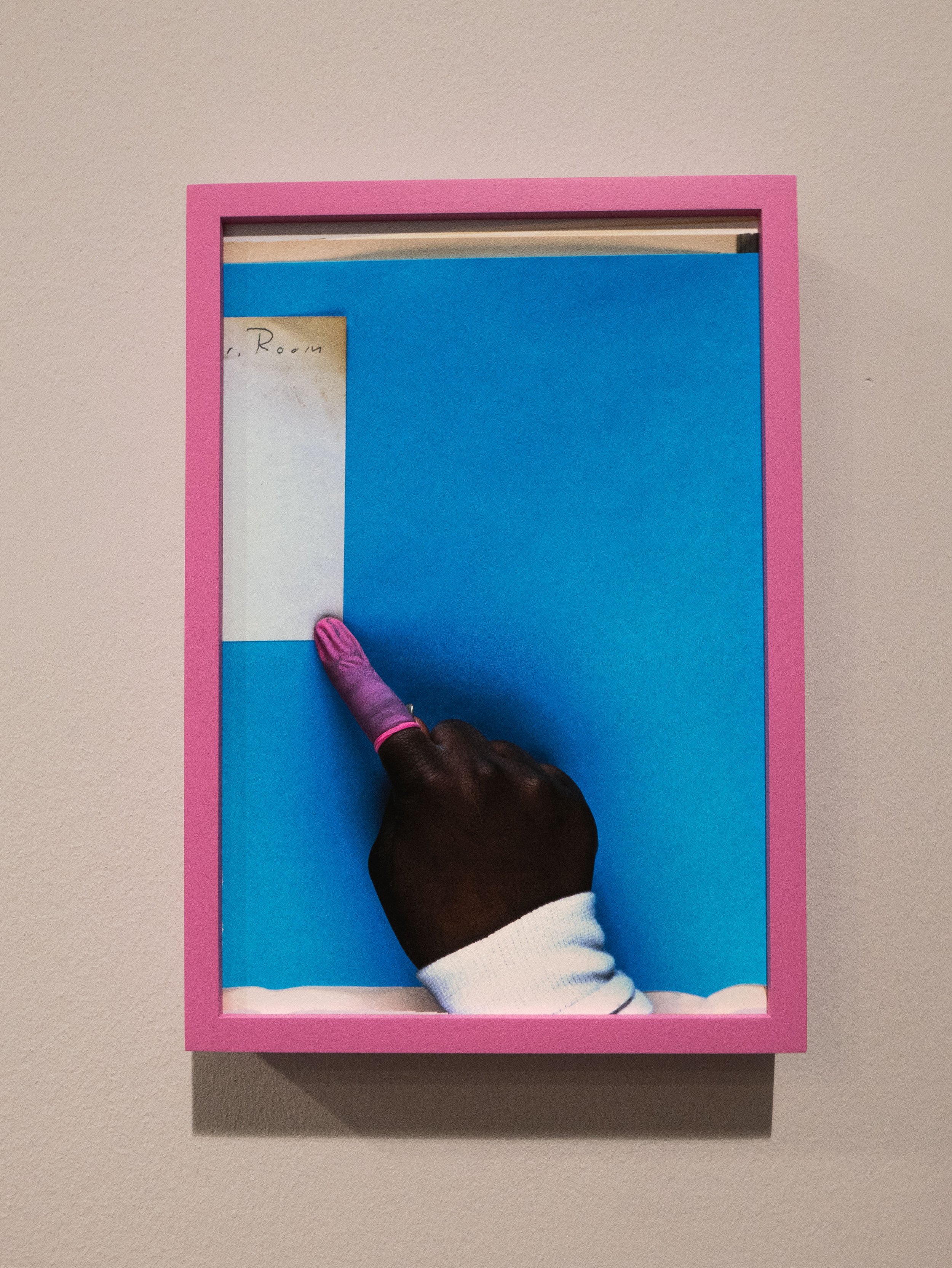 For photographers, the issues which give rise to imminent concern, online financial fraud, plagiarism or repeated recycling of cliched ideas, the rapid turnover of vast numbers of increasingly homogeneous imagery and the built in obsolescence of expensive digital hardware and software (with the failure of manufacturers to provide continuing support) are all well known but were not specifically addressed by the exhibition. Good research often leads to more questions than answers and this exhibition highlighted several new areas of concern, especially in relation to the practices of the large multi-national companies providing our online services but without offering any immediate solutions. All digital photographs of the exhibits used to illustrate this post captured in situ at the Photographers Gallery, London by the author.Featured Image: Photograph of the exhibit - 'The driver and the cameras' (Google street view camera operators), Emilio Vavarelli 2012.Further information about the exhibitors is available from: www.thephotographersgallery.org.uk/whats-on/exhibition/all-i-know-is-whats-on-the-internet
For photographers, the issues which give rise to imminent concern, online financial fraud, plagiarism or repeated recycling of cliched ideas, the rapid turnover of vast numbers of increasingly homogeneous imagery and the built in obsolescence of expensive digital hardware and software (with the failure of manufacturers to provide continuing support) are all well known but were not specifically addressed by the exhibition. Good research often leads to more questions than answers and this exhibition highlighted several new areas of concern, especially in relation to the practices of the large multi-national companies providing our online services but without offering any immediate solutions. All digital photographs of the exhibits used to illustrate this post captured in situ at the Photographers Gallery, London by the author.Featured Image: Photograph of the exhibit - 'The driver and the cameras' (Google street view camera operators), Emilio Vavarelli 2012.Further information about the exhibitors is available from: www.thephotographersgallery.org.uk/whats-on/exhibition/all-i-know-is-whats-on-the-internet


